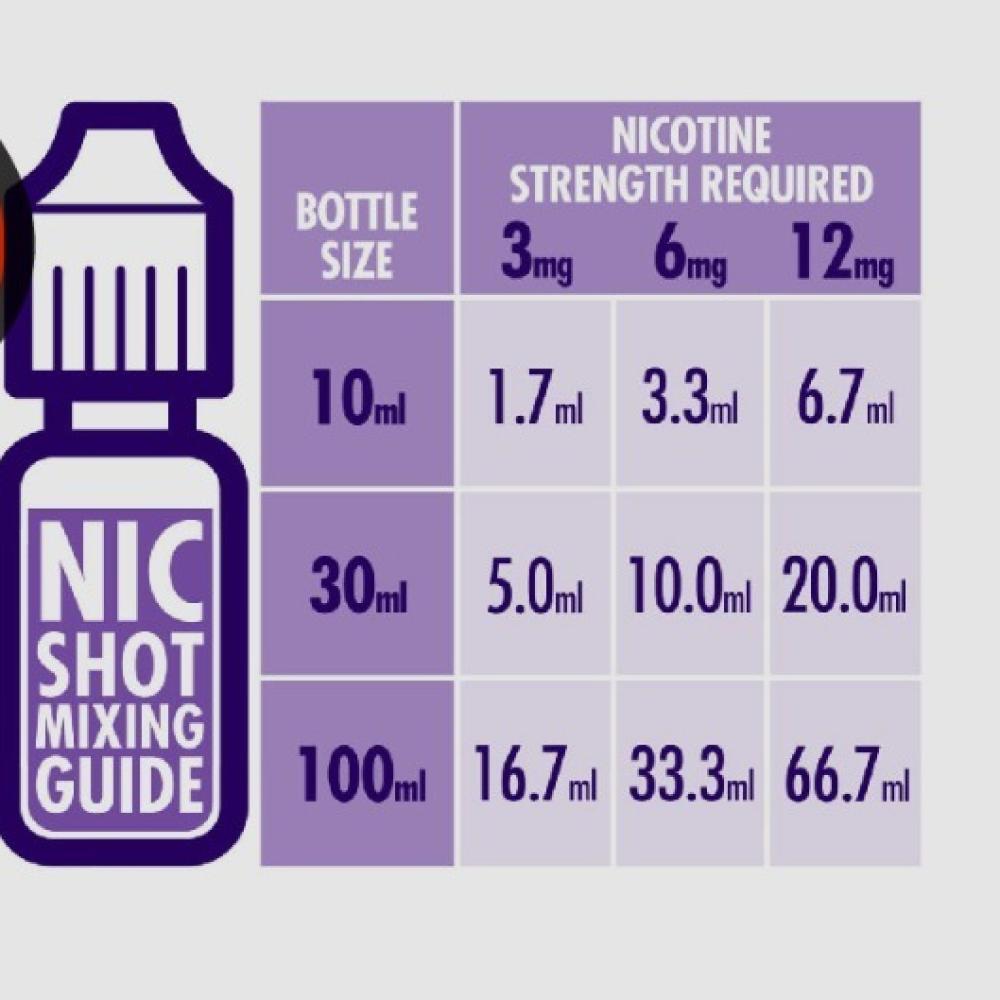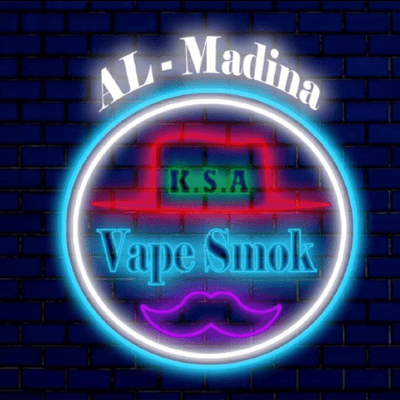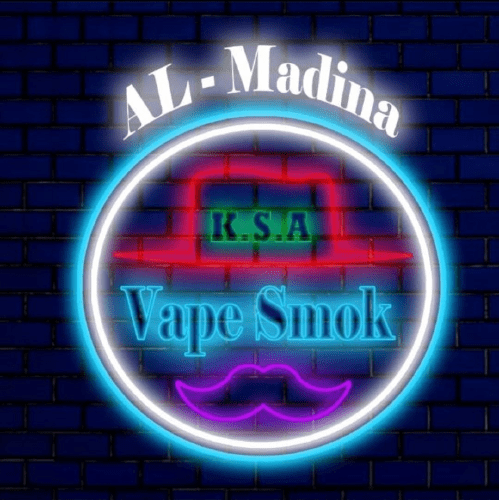

Welcome to Vape Insights – Your Ultimate Source for Vaping Knowledge!
Are you curious about whether vapes contain nicotine? You're not alone. At Vape Insights, we dive deep into the world of vaping to provide you with accurate information and insights. Explore our comprehensive resources to understand everything there is to know about vaping products and nicotine.
**Understanding Vaping: Does Every Vape Product Contain Nicotine?**
Get the facts about the ingredients in vaping products and learn which ones contain nicotine and which don’t.
**The Truth About Vapes: Are They Always Nicotine-Infused?**
Discover whether all vape products automatically come with nicotine and what that means for you.
**Exploring the Ingredients: Do All Vapes Have Nicotine?**
We explore what’s inside your vape, focusing on nicotine content and its implications.
**Nicotine and Vaping: What You Need to Know Before You Inhale**
Educate yourself about the relationship between nicotine and vaping to make informed decisions.
**Nicotine-Free Vapes: Are They a Safe Alternative?**
Learn about nicotine-free vapes and whether they are a safer choice for you.
**Vaping Myths Debunked: Is Nicotine Present in Every Vape?**
We set the record straight on common vaping misconceptions, including nicotine presence.
**The Risks of Vaping: Separating Fact from Fiction on Nicotine Content**
Realize the potential risks and understand misleading claims about nicotine in vapes.
**How to Choose Nicotine Levels in Vaping: What Consumers Should Know**
Explore how to select the right nicotine levels in vaping products tailored to your needs.
**Vapes and Their Variability: Why Some Products Contain Nicotine While Others Don’t**
Understand the diverse vape market and why not all products are created equal.
**Navigating the Vape Market: Understanding Nicotine Options in E-liquids**
Get to grips with the various nicotine concentrations available in e-liquids to find your perfect fit.
With Vape Insights, you will always have the latest accurate information on whether vapes contain nicotine. Dive into our resources today and stay informed!

The Truth About Vapes: Are They Always Nicotine-Infused?
Vaping has garnered a lot of attention, especially in the ongoing debate of vaping vs smoking. Many people associate vapes with nicotine, but the reality is that not all vape products contain it. In fact, some users actively choose e-liquids with zero nicotine for various reasons. Understanding this nuance can significantly impact one's vaping experience.
Some Users Opt for E-liquids with Zero Nicotine
For numerous vapers, the choice of nicotine-free options comes down to personal health goals or preferences. Whether someone has successfully quit smoking and is looking to enjoy the flavors without the nicotine hit, or simply wants to avoid addiction altogether, zero-nicotine e-liquids are a viable alternative.
- Health considerations: Individuals worried about the dangers of nicotine may prefer nicotine-free products.
- Flavor enjoyment: Many vapers seek the sensory experience without any stimulation from nicotine.
- Social scenarios: In some cases, users might want to vape socially without the effects of nicotine, creating a more comfortable experience.
Importance of Checking Product Labels for Nicotine Content
Just because there are options for nicotine-free vaping doesn't mean all products are created equal. It’s crucial for consumers to check product labels before purchasing. Not all e-liquids are transparent about their nicotine content, and here’s why it matters:
- Awareness of strength: Knowing the nicotine level helps users avoid accidental overconsumption.
- Comparative analysis: Understanding nicotine in a cigarette vs vape can help users make informed choices regarding their health and preferences.
- Quality assurance: Labels also provide insights into the overall composition of the product, which is essential for those concerned about potential harmful ingredients.
In conclusion, while many associate vaping with nicotine, a significant number of users are promoting a healthier alternative.
Exploring the Ingredients: Do All Vapes Have Nicotine?
Building on the previous discussions around nicotine content, it's essential to explore why nicotine is such a prevalent ingredient in many vapes. Understanding these ingredients helps emphasize the variety available in the vaping market.
Nicotine as a Common Component Due to Addiction
Nicotine has long been recognized for its addictive properties, which is one of the core reasons it’s frequently found in vape products. For many individuals transitioning from traditional smoking, the craving for nicotine can drive the choice of e-liquids. Here’s why nicotine remains a common component:
- Addiction potential: Nicotine stimulates the release of dopamine, creating pleasurable sensations that keep users returning for more.
- Mimicking smoking habits: For those who have smoked for years, becoming accustomed to nicotine is a large part of their experience, making it challenging to switch to non-nicotine alternatives.
- Market demand: Many brands cater to users who still seek that familiar nicotine hit, influencing product offerings to include various nicotine levels.
Availability of Nicotine-Free Vape Flavors
Fortunately, for those who prefer avoiding nicotine, the market has responded with a broad array of nicotine-free vape flavors. This has been beneficial for both casual users and those trying to reduce their nicotine intake. Some points to consider include:
- Diverse flavors: From fruity concoctions to dessert-inspired blends, the options are endless for vapers who want to enjoy the experience without nicotine.
- Accessibility: Many online and local vape shops offer nicotine-free alternatives, making it easier for consumers to find what they seek.
- Health and wellness: For those prioritizing health, nicotine-free vapes provide a safer way to indulge in vaping without the risks associated with nicotine consumption.
In summary, while nicotine is prevalent due to its addictive nature, the marketplace has embraced the needs of those seeking a nicotine-free vaping experience, ensuring a balanced selection for all preferences.
Nicotine and Vaping: What You Need to Know Before You Inhale
With a clearer understanding of nicotine's role in vaping, it’s crucial to delve deeper into how it varies across different products and what separates nicotine-containing e-liquids from their nicotine-free counterparts. Knowing this can empower users to make well-informed choices.
Varying Nicotine Levels Across Different Products
One of the notable aspects of vaping is the sheer variety of nicotine levels available, which can range from zero to exceptionally high concentrations. This variability allows users to customize their vaping experience based on their needs and preferences. Here’s what to consider:
- Nicotine strength options: Common strengths include 0mg, 3mg, 6mg, 12mg, and sometimes even higher. This spectrum helps users select the level that best suits their former smoking habits.
- Personalization: For instance, someone transitioning from smoking may start with a higher nicotine concentration and gradually reduce it if they aim to decrease their intake.
- Effects and sensations: Different levels can produce varying throat hits or satisfaction, influencing how satisfying the vape feels.
Difference Between Nicotine-Containing and Nicotine-Free E-liquids
Understanding the core differences between nicotine-containing and nicotine-free e-liquids can greatly enhance a user’s vaping experience:
- Addiction potential: Nicotine-containing e-liquids can lead to dependency, mimicking the smoking experience, while nicotine-free options eliminate this risk.
- Flavor emphasis: Many users find that nicotine-free e-liquids allow for a more nuanced flavor experience since the nicotine can sometimes overshadow the taste profiles.
- Health considerations: For health-conscious individuals, opting for nicotine-free e-liquids can mitigate some risks associated with nicotine intake, making it a safer alternative.
In conclusion, being aware of the varying nicotine levels and the core differences between nicotine-containing and nicotine-free e-liquids can significantly affect a user’s choice, ultimately shaping their overall vaping journey.
Nicotine-Free Vapes: Are They a Safe Alternative?
As more people explore vaping options, nicotine-free vapes are gaining traction as a potentially safer alternative. With a better understanding of nicotine's risks, many users are eager to learn whether these nicotine-free options truly offer a risk-free experience.
Eliminating Nicotine Risks with Nicotine-Free Options
One of the primary advantages of nicotine-free vapes is the absence of nicotine-related risks. This makes them especially appealing for individuals hoping to avoid addiction altogether. The benefits include:
- Reduced dependency: By eliminating nicotine, users can enjoy the sensory pleasure of vaping without the risk of developing a dependency that comes with traditional smoking.
- Mitigated withdrawal symptoms: For those transitioning from nicotine, going nicotine-free can lessen withdrawal experiences that many users face when quitting.
- Enhanced enjoyment: Many users report a more pleasurable vaping experience without nicotine, allowing them to savor the various flavor profiles available in e-liquids.
Importance of Researching Other Ingredients for Safety
While nicotine-free options remove one significant risk factor, it’s essential for consumers to understand that not all vape juices are created equal. Researching other ingredients in e-liquids is crucial for safety:
- Common ingredients: Vapes often contain propylene glycol (PG) and vegetable glycerin (VG), which are generally recognized as safe but can cause irritation for some individuals when inhaled in vapor form.
- Additives and flavorings: Some flavoring agents may not have been rigorously tested for inhalation safety. Being informed can help users avoid potentially harmful substances.
- Reviews and ingredients list: Reading product reviews and checking the ingredient list can provide insights into the quality and safety of the e-liquid chosen.
In conclusion, nicotine-free vapes can indeed be a safer alternative for those looking to avoid the risks associated with nicotine. However, it's vital to remain vigilant about the other ingredients present, ensuring a well-rounded understanding of the overall safety of the vaping experience.
Vaping Myths Debunked: Is Nicotine Present in Every Vape?
In the ever-evolving world of vaping, misconceptions about nicotine levels and e-liquid composition are common. One prevalent myth is that all vapes contain nicotine, but the reality is much more nuanced. Let’s explore this topic further.
Many Vapers Choose Nicotine-Free E-liquids
It’s important to note that a significant number of vapers prefer nicotine-free options. This choice often stems from various reasons, including health-conscious decisions or simply the desire to enjoy flavors without the addictive substance. Consider the following:
- Transitioning from smoking: Many who have recently quit smoking often start with nicotine-free options to move away from their addiction.
- Flavor exploration: Users frequently express a preference for vaping’s flavor profiles without the overpowering taste of nicotine. They enjoy experimenting with diverse flavors, ranging from fruity to dessert-inspired blends.
- Social vaping: Some individuals choose to vape in social settings to create a relaxing atmosphere without the side effects of nicotine.
Understanding Vape Product Composition to Make Informed Choices
To debunk the myth surrounding nicotine, it’s crucial for consumers to understand the composition of vape products. Here’s what to consider:
- Product labeling: Always check labels for nicotine content, as many manufacturers clearly mark whether a product contains nicotine, is nicotine-free, or has varying levels.
- Ingredients analysis: Besides nicotine, vapes may contain propylene glycol, vegetable glycerin, and flavoring agents. Understanding these components helps assess overall safety.
- Research and reviews: Familiarizing oneself with product reviews and research findings can provide valuable context on product quality and user experiences.
In conclusion, many vapers actively seek nicotine-free e-liquids, defying the myth that vaping necessarily involves nicotine. By staying informed about product composition, users can make choices that align with their preferences and health goals.
The Risks of Vaping: Separating Fact from Fiction on Nicotine Content
As the vaping landscape continues to evolve, so too do the myths and truths surrounding it. One of the most significant misconceptions is that all vape products contain nicotine. Understanding the realities of vaping is crucial for making informed decisions that impact health and well-being.
Not All Vape Products Contain Nicotine
It's essential to highlight that not all vaping products are infused with nicotine. This misconception can lead to unnecessary fears for those considering or currently engaging in vaping. Here are some facts to clear the air:
- Nicotine-free options galore: The market is rich with nicotine-free e-liquids, catering to users who wish to experience vaping without the addictive substance. From sweet fruit flavors to rich desserts, the variety is vast.
- Personal choice: Many individuals, including those who have successfully quit smoking, choose to vape for the pleasure of flavors rather than nicotine consumption, showcasing that vaping can be a flavor-centric experience.
- Awareness of product types: Consumers are encouraged to read labels and inquire about product specifications to understand what they are purchasing. This way, they can choose what best aligns with their preferences.
Ongoing Research on Health Implications of Vape Ingredients
While nicotine content is an important factor, the health implications of vaping go beyond just nicotine. As research is still unfolding, understanding ingredient safety has become a primary concern:
- Investigating long-term effects: Medical studies are currently examining the long-term health outcomes of inhaling different vape ingredients, including flavoring agents and base components like propylene glycol and vegetable glycerin.
- Ingredient transparency: Many manufacturers are now striving for clearer labeling and transparency regarding the contents of their products, which is a significant step toward safer vaping practices.
- Potential risks: While vape products may not contain nicotine, there could still be risks associated with other ingredients. Therefore, staying informed through ongoing research is vital for users’ safety.
In conclusion, while it's a myth that all vapes contain nicotine, it’s essential to remain vigilant about product choices and ingredient safety. In a landscape where ongoing research seeks to illuminate the risks associated with vaping, informed consumers are in the best position to navigate their vaping journey.
How to Choose Nicotine Levels in Vaping: What Consumers Should Know
With the myths surrounding nicotine cleared up, it’s time to focus on a critical aspect for any vaper: how to choose the right nicotine level. Selecting the right strength is essential for creating a satisfying vaping experience, especially for those either new to vaping or transitioning from smoking.
Importance of Selecting the Right Nicotine Level
Choosing the appropriate nicotine level impacts not only the enjoyment of the vaping experience but also overall satisfaction and potential health outcomes. Here’s why this decision matters:
- Smoking cessation: For those trying to quit smoking, finding the right nicotine level can help manage cravings. A level too low may lead to dissatisfaction, while a level too high might contribute to unwanted side effects.
- Personal preferences: Vaping is ultimately about personal choice. Different flavors and nicotine levels can produce varied sensations, and finding the right combination enhances the enjoyment.
- Avoiding nicotine overload: Selecting a too-high nicotine level could result in adverse effects like dizziness or nausea. It’s crucial to find a balance that provides satisfaction without the uncomfortable side effects.
Gradual Adjustment of Nicotine Strengths for Beginners
For beginners, the journey doesn’t have to be overwhelming. It’s generally advisable to start with a gradual approach to nicotine levels:
- Assess current consumption: If you’re transitioning from smoking, evaluate your nicotine intake from cigarettes. For example, a pack-a-day smoker may initially require a higher nicotine level to ease the transition.
- Start with a moderate level: Trying an e-liquid with around 6mg to 12mg of nicotine is a solid starting point, allowing for more control and comfort.
- Adjust as needed: After a few weeks, users can fine-tune their nicotine strength based on their vaping experience. For instance, if you feel the need for more satisfaction, consider gradually moving up; if you’re experiencing dizziness, it might be time to lower your nicotine level.
In conclusion, understanding and selecting the right nicotine level is paramount for any vaper. By taking an informed and gradual approach, users can enhance their overall experience while maintaining control over their nicotine intake, setting them up for a successful vaping journey.
Vapes and Their Variability: Why Some Products Contain Nicotine While Others Don’t
With a clearer understanding of how to choose nicotine levels, it’s essential to explore why such variability exists in vape products. The decision to include nicotine within a vape product doesn’t happen by chance; it’s influenced by a range of factors important for both manufacturers and consumers.
Factors Influencing the Presence or Absence of Nicotine in Vapes
Several crucial factors shape whether a vape product contains nicotine:
- Target audience: Different demographics exhibit varied preferences. For instance, those who are quitting smoking may seek out nicotine-containing products, while recreational users may prefer nicotine-free options.
- Product positioning: Brands often market themselves to specific segments. For example, some brands position themselves as health-conscious alternatives, offering robust selections of nicotine-free e-liquids to attract users looking for safer options.
- Flavor experiences: Many vapers enjoy experimenting with flavors, and some manufacturers produce nicotine-free options to allow users to indulge in flavor without the added kick of nicotine.
Consumer Demand, Regulatory Landscapes, and Nicotine Cessation Trends
As vaping has grown, so has the complexity of consumer preferences, regulatory environment, and nicotine cessation trends:
- Shifting trends: As more information about the dangers of smoking becomes available, many individuals are actively looking for solutions to quit. This has led brands to develop a wider array of nicotine-free products.
- Regulatory actions: Countries and states often have different laws regarding nicotine concentrations in e-liquids, making some products regulated while others offer greater freedom in formulation.
- Market responses: Manufacturers keep a keen eye on consumer trends, offering varying nicotine levels based on what users are asking for at any given moment, ensuring better satisfaction.
In summary, the variability in vape products, particularly concerning nicotine content, arises from multiple intertwined factors. Both manufacturers and consumers play a role in shaping the offerings available in the marketplace, ensuring diverse options tailored to individual needs and preferences.
Navigating the Vape Market: Understanding Nicotine Options in E-liquids
As consumers delve deeper into the vape market, understanding the various nicotine options becomes paramount. With a plethora of choices available, it’s essential to navigate through the landscape with clarity, ensuring that users can select the products that best meet their needs.
Diverse Nicotine Options Available in the Vape Market
The range of nicotine options in e-liquids is as varied as the flavors themselves. Knowing what’s available can ease the decision-making process:
- Nicotine-free e-liquids: Ideal for those who enjoy vaping without nicotine's addictive properties, these options allow users to experience the taste and sensation of vaping without any associated health risks related to nicotine.
- Low nicotine strengths: These typically range from 3mg to 6mg. They’re commonly favored by light smokers or those transitioning away from higher nicotine levels, providing a gentle throat hit without overwhelming stimulation.
- Medium to high nicotine strengths: These range from 12mg to 24mg (and sometimes above) and cater to those who are either heavier smokers or are in the process of quitting. Users often select these to manage cravings effectively.
Familiarizing Consumers with Different Nicotine Strengths and Alternatives
For newcomers to vaping, understanding nicotine strengths can initially feel daunting, but becoming familiar with these terms can simplify the process:
- Throat hit: This refers to the sensation experienced in the throat when inhaling nicotine. Higher concentrations generally yield a more pronounced hit.
- Gradual adjustments: If someone starts with a higher concentration and finds it too strong, they can progressively lower their dosage to find the sweet spot that maximizes enjoyment and satisfaction.
- Flavor compatibility: Users may also discover that some flavor profiles complement different nicotine levels better than others. For example, sweeter flavors might feel more pleasant at lower nicotine concentrations.
In conclusion, navigating the vape market requires a grasp of the diverse nicotine options available in e-liquids. Understanding the strengths and alternatives not only empowers consumers but also enhances their overall vaping experience, helping to foster a more tailored and satisfying journey.

The Truth About Vapes: Are They Always Nicotine-Infused?
The Truth About Vapes: Are They Always Nicotine-Infused?
Vaping has surged in popularity over the past decade, offering an alternative to traditional smoking. However, a common misconception persists: all vape products contain nicotine. While nicotine is a prevalent ingredient in many e-liquids, it is not a mandatory component of all vaping products. This guide explores the reality of nicotine content in vapes, the availability of nicotine-free options, and the implications for users.
1. Understanding Vaping Products
Vaping devices, also known as e-cigarettes or vape pens, work by heating a liquid (e-liquid or vape juice) to produce vapor, which users inhale. The composition of e-liquids can vary significantly, influencing the vaping experience and health implications.
Common Components of E-Liquids:
- Propylene Glycol (PG): A carrier liquid that provides throat hit and carries flavor effectively.
- Vegetable Glycerin (VG): Produces thicker vapor and a smoother throat hit.
- Flavorings: Provide a wide array of taste options, from fruits and desserts to beverages and menthol.
- Nicotine (Optional): A stimulant and addictive substance found naturally in tobacco plants.
2. Are All Vapes Nicotine-Infused?
No, not all vape products contain nicotine. The presence of nicotine depends on the type of e-liquid chosen by the user. Here's a breakdown:
- Nicotine-Infused E-Liquids:
- Purpose: Primarily used by individuals seeking to reduce or quit smoking traditional cigarettes by satisfying nicotine cravings.
- Variety: Available in various concentrations, ranging from high (e.g., 18 mg/mL) to zero (0 mg/mL).
- Nicotine-Free E-Liquids:
- Purpose: Preferred by users who enjoy vaping for the flavors or as a lifestyle choice without the addictive component of nicotine.
- Availability: Widely available in the market, catering to both new vapers and those who have quit nicotine use.
3. Types of E-Liquids Based on Nicotine Content
- Full Nicotine E-Liquids:
- Contain nicotine levels comparable to traditional cigarettes.
- Designed to replicate the nicotine delivery of smoking.
- Reduced Nicotine E-Liquids:
- Lower nicotine concentrations to help users gradually decrease their intake.
- Often part of a step-down plan for quitting nicotine.
- Nicotine-Free E-Liquids:
- Contain 0 mg/mL nicotine.
- Focus on flavor variety without the addictive substance.
- Customizable Nicotine Options:
- Some vape systems allow users to add nicotine shots to nicotine-free bases.
- Offers flexibility in controlling nicotine intake.
4. Reasons for Choosing Nicotine-Free Vapes
- Health Considerations:
- Avoiding nicotine can reduce the risk of addiction and other nicotine-related health issues.
- Flavor Enjoyment:
- Enhanced focus on the diverse range of flavors available without the interference of nicotine's strong taste.
- Lifestyle Choices:
- Some users prefer vaping as a hobby or for social reasons without the desire for nicotine.
- Transitioning:
- Users transitioning from nicotine-containing products to completely nicotine-free options.
5. Regulatory and Labeling Standards
Regulations surrounding vaping products vary by country and region, but several standards aim to ensure transparency regarding nicotine content:
- Labeling Requirements:
- E-liquids must clearly state their nicotine concentration on the packaging.
- Units are typically measured in milligrams per milliliter (mg/mL) or as a percentage (%).
- Age Restrictions:
- Purchase of nicotine-infused vape products is often restricted to individuals above a certain age (e.g., 18 or 21 years old).
- Quality Control:
- Regulatory bodies may enforce standards to ensure accurate labeling and safety of vaping products.
6. Identifying Nicotine-Free Vapes
When selecting vape products, users can identify nicotine-free options by:
- Reading Labels:
- Check the e-liquid bottle for nicotine concentration information. Look for "0 mg/mL" or "0%" nicotine labels.
- Choosing Reputable Brands:
- Opt for established brands that provide clear and accurate labeling of their products.
- Consulting Retailers:
- Ask knowledgeable staff at vape shops for recommendations on nicotine-free e-liquids.
7. Benefits and Considerations of Nicotine-Free Vaping
Benefits:
- Reduced Addiction Risk: Eliminates the potential for nicotine dependence.
- Healthier Option: Avoids nicotine-related cardiovascular and neurological effects.
- Enhanced Flavor Experience: Allows full appreciation of the diverse flavors without nicotine's interference.
Considerations:
- Purpose of Vaping: Users seeking nicotine for smoking cessation may need alternatives or gradual reduction strategies.
- Product Availability: While widely available, some regions may have limited options for nicotine-free e-liquids.
8. Potential Misconceptions
- All Vape Users Consume Nicotine:
- Many users prefer nicotine-free vaping for various reasons, including flavor enjoyment and health considerations.
- Nicotine-Free Vaping is Harmless:
- While avoiding nicotine reduces certain risks, vaping still involves inhaling substances that may have other health implications. It's essential to stay informed and make choices based on reliable information.
Conclusion
Vaping is not synonymous with nicotine consumption. There is a significant and growing market for nicotine-free vape products, catering to those who seek the sensory experience of vaping without the addictive properties of nicotine. Whether for health reasons, flavor exploration, or lifestyle preferences, nicotine-free vapes offer a versatile option for a diverse range of users. However, it's crucial to remain informed about the contents of vaping products and to choose reputable brands that prioritize transparency and safety.
Disclaimer: Vaping carries health risks, including potential exposure to harmful substances. This information is for educational purposes only and does not endorse or promote vaping. If you have health concerns or questions about vaping, consult a healthcare professional.
OXVA is a leading brand in the field of manufacturing vape products.
Elf Bar is a leading e-cigarette brand, known for offering ready-to-use vape devices.
Geek Vape is one of the leading companies in the vape devices and related accessories industry.
DZRT Nicotine Pouches is one of the brands specialized in nicotine pouches.
Ripe Vapes is a well-known company in the manufacture of electronic cigarettes and e-liquids (flavors).
Roll Upz is a well-known brand in the e-liquid industry.
Grand Vape (or Grand) is one of the companies specialized in manufacturing vape devices and electronic liquids.
Browse by most popular vape brands
Gummy is a specialty brand.
SMOK is one of the most popular brands.
Sams Vape is a well known brand.
DR.VAPES Dr.Vapes is one of the well-known companies
JUCY JUCY Flavors are a range of flavors used in electronic vaping.
Browse by most popular vape brands
Products of the brand Mood Vape Company
Disposable disposable syringes
Electronic vape and hookah devices
Salt and vape flavors for molasses and electronic hookah
Accessories, coils, supplies and pods for electronic devices

